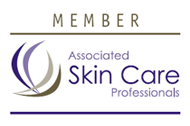Benefits of Skin Care Therapies
Rachel is an advanced and highly sought expert esthetician for her commitment to excellence in training, equipment and client satisfaction due to outstanding results.
YOUR ESTHETICIAN:
Your skin care treatments should be provided by a properly trained professional. Ask your skin care therapist about her background, training, and experience—especially as it relates to the treatment you are considering. Rachel Cohen is a professional member of Associated Skin Care Professionals and has met Texas licensing credentials, core training requirements, and agrees to follow a code of ethics which ensures you’ll be treated responsibly and respectfully. ASCP also provides its members with comprehensive resources that allow them to keep up with changing trends, making certain you’ll receive the most up-to-date therapies available.
Why should I see an esthetician?
Estheticians are trained in skin wellness, helping their clients balance oil and moisture content and achieve a healthy, youthful complexion with various facial treatments. They commonly perform hair removal techniques such as waxing. A variety of treatments and products are used to protect skin from environmental hazards and combat fine lines, wrinkles, and a dull, uneven skin tone. Choose an esthetician that continuously develops their skills with advanced training in managing conditions such as acne, rosacea, and dry skin, to name just a few. And finally, skin care treatments are wonderfully relaxing and rejuvenating. If smooth, healthy skin is your goal, visiting a skin care professional can benefit you.
What’s the difference between dermatology, cosmotology and esthetics?
Dermatology is practiced by physicians who specialize in disorders of the skin. If you’re being treated by a dermatologist, an experienced esthetician can provide complementary and support therapies using facial treatments with state of the art products and technology such as the Lamprobe and Rezenate services. In addition, estheticians are trained to recognize early signs of many medical conditions needing a dermatologist. Cosmetology is primarily the study of beauty treatments including nail, hair care, styling and makeup application.
Techniques and products
Techniques used by estheticians include exfoliation, waxing, pore cleansing, and chemical peels. Clinical creams, lotions, specialty products and gel masks are used to reduce fine lines and blemishes. Machines also deliver high-tech services that only the most experienced estheticians train on, purchase and use in their practice for exceptional service for their clients.
Some common therapies:
- Chemical peel: An exfoliation process, very effective in treating a large range of skin concerns such as aging, sun damage, acne, mild scarring, improving overall skin brightness and evening skin tone. Peels can be light, moderate or deep. Light peels require no down time from work or normal activities.
- Exfoliation: The removal of dead skin cells manually (scrubbing, brushing, or using a system such as microdermabrasion), with a chemical peel (a product that causes dead skin cells to shed) or with an enzymatic product that digests dead skin cells.
- Facial: A facial is the most popular treatment performed by estheticians to get a good understanding of your skin prior to suggesting more aggressive treatments. A facial generally includes makeup removal and skin cleansing, exfoliation by mechanical, enzymatic or chemical means, facial massage, a treatment mask, serum/moisturizer and sunblock.
- Microdermabrasion: The process of resurfacing the skin using a machine that sands the skin’s epidermal (outer) layer, using either a wand tipped with crushed diamonds, or a spray of special crystals which are then suctioned back up along with the dead skin cells.
- Waxing: Waxing removes unwanted hair at the root. There are two different types: hard and soft wax. Soft wax is applied warm to the skin in a thin layer in the direction of hair growth. This method is best used on larger areas of the body. Hard wax is used without cloth strips. Hard wax is less irritating to sensitive skin and is excellent for the bikini, underarm and facial areas.
Visiting an esthetician
It is always a good idea to schedule a consultation appointment prior to your first treatment, especially if you are new to esthetic treatments. This gives you and your therapist a chance to discuss your goals and expectations for the first visit, and long term goals for the future. During a consultation, your therapist will go over an extensive intake form, and most likely do a cleansing of the skin followed by a detailed skin analysis. This will give your therapist the information she/he needs to create an individualized treatment plan, both for a series of professional treatments and recommendations for products you can use at home.
What about home care?
Much of the success of maintaining a visible improvement after treatment depends on consistent, correct home care. Your esthetician is trained to select the products that will most benefit your skin, and to advise you on how to maintain your professional results between visits. Like medical or dental care, following the right daily regimen at home is essential if you are to get the most out of your visits to a professional.
RACHEL COHEN
817-681-6890
SKIN + RACHEL = ![]()


